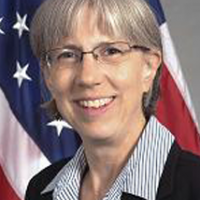Jul102015
Posted at 2:55 PM
Post by Dr. Sue Helper
On July 9, I attended a gathering of two dozen manufacturing executives to discuss ways to improve the competitiveness of America’s supply chains. This exciting event is part of the White House Supply Chain Innovation Initiative that the President announced in March.
The initiative is in part based on a report and 50 interviews we in the Commerce Department’s Office of the Chief Economist did in cooperation with the White House.
Continuing the recent resurgence of U.S. manufacturing will depend on re-building the dense network of small manufacturers that make up the backbone of America’s supply chains. Since February 2010, we’ve gained almost 900,000 new manufacturing jobs. America’s 230,000 small manufacturing firms have played a key role in this resurgence, adding the majority of new manufacturing jobs. Dense networks of these small manufacturers are vital to the process of taking a product from concept to market, and the exchange of manufacturing know-how across suppliers is essential for the diffusion of the new technologies that give U.S. manufacturing its cutting edge. However, these supply chains are under stress, after a decade in which employment plummeted and investment stagnated. Small manufacturers then and now face steep barriers to innovation; they are 1/7 as likely to perform R&D as large firms, they face barriers in commercializing new products, and they are only 60% as productive as large manufacturers.
The White House Supply Chain Innovation Roundtable brought together leaders from two dozen manufacturers committed to strengthening small manufacturers in their domestic supply chains. Secretary Penny Pritzker emphasized the importance of the gathering, noting, “We have a window of opportunity right now to rebuild a competitive manufacturing sector in this country by strengthening manufacturing ecosystems, and widening the lines of communication between small and large suppliers.” She pointed out that “We, in government, can be a key partner in addressing these needs”, and spoke about two ways the Commerce Department works to strengthen supply chain innovation.
First, the Department serves as a convenor, helping to lift up best practices in the private sector. For example, she noted that leading firms look beyond the price per unit when evaluating suppliers and instead consider other ways suppliers add value, such as through innovation, design, and on-time delivery. Second, the Department provides services such as the Manufacturing Extension Partnership. She noted that “it has been inspiring to hear how these practices yield benefits for both suppliers and customers in America’s supply chains”.
Patrick Collignon , Senior Vice President of Volvo’s Truck Operations for Americas illustrated the Secretary’s points, describing Volvo’s strategy of “profitable proximity sourcing”, and work with the Manufacturing Extension Partnership. Volvo holds workshops to identify opportunities for Volvo and suppliers to work together to reduce waste, lead time, and bottlenecks in the value chain. So far, the process has resulted in $1M in savings to Volvo suppliers and $2M in savings to Volvo. By highlighting the high costs of transportation, long lead-times, and poor quality, the workshops show the importance of focusing on value creation, rather than simply searching for the lowest price per unit.
A key player in Volvo’s success is GENEDGE, the Virginia affiliate of the Commerce Department’s Manufacturing Extension Partnership, which helped Volvo develop a model to improve supply chain visibility, and held the initial workshops with suppliers. As a result of successes such as this, MEP announced at the roundtable that it is scaling up its Supply Chain Optimization Service from 8 states to serve all 50 states by the end of 2016. This rapid roll-out is possible because of MEP’s 55 regional centers and decades of experience serving small manufacturers.
Several members of the Commerce Department’s Manufacturing Council also attended, including executives from major manufacturers such as General Motors and Lockheed Martin, and small companies such as MacArthur Corporation.
Following the roundtable, most participants stayed for a working lunch which yielded additional insights. For example, firms discussed the importance of moving toward a “farmer” model of nurturing suppliers, away from a “hunter” model that seeks to select only from existing capabilities, without helping to grow them. Participants also expressed amazement at the extent of government resources that are available to help small manufacturers. They pointed out that these resources are not well publicized – a defect we will start to remedy immediately.
I’ve found it personally gratifying to work on the Supply Chain Innovation Initiative, because this has been the main topic of my academic research over many years. (See https://www.aeaweb.org/articles.php?f=s&doi=10.1257/jep.28.1.49 and http://www.personal.psu.edu/users/g/i/gis1/CreatingLeanSuppliers.pdf.) I’m excited that the initiative will continue. For example, in October, the White House will join other federal agencies and national labs in hosting a second supply chain convening, focused on expanding regional efforts to improve local eco-systems and link businesses with government innovation assets such as the many we have in the Commerce Department.



